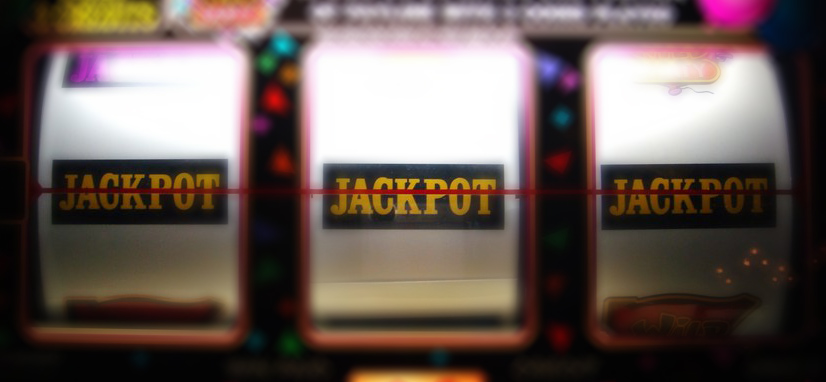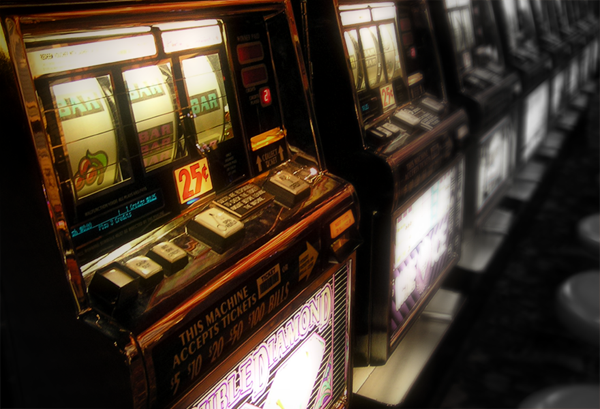 In my first two pieces here on CalvinAyre.com, I’ve noted some of the challenges facing publicly traded casino operators here in the US. One of the key issues is the continual increase in competition, as more states legalize gambling, and permit additional locations, in the constant battle among state legislatures for gambling tax revenues. Last week, I covered the case of Delaware’s Dover Downs (DDE), which has seen its profitability severely impacted by an onerous tax arrangement with the state, negotiated before its neighbors Pennsylvania and Maryland legalized, and then expanded, their own gaming operations.
In my first two pieces here on CalvinAyre.com, I’ve noted some of the challenges facing publicly traded casino operators here in the US. One of the key issues is the continual increase in competition, as more states legalize gambling, and permit additional locations, in the constant battle among state legislatures for gambling tax revenues. Last week, I covered the case of Delaware’s Dover Downs (DDE), which has seen its profitability severely impacted by an onerous tax arrangement with the state, negotiated before its neighbors Pennsylvania and Maryland legalized, and then expanded, their own gaming operations.
That trend looks set to continue. Massachusetts authorized gambling at three casinos in November (1), sparking concerns at Connecticut’s tribal casinos Mohegan Sun and Foxwoods (2), and leading neighboring Rhode Island to consider (3) expanding its own gaming operations in response. In the Midwest, Illinois’ new casino projects – including one potentially set in downtown Chicago – are not only (4) cannibalizing existing in-state properties but (5) threatening the five border casinos in northwest Indiana. Ohio will see three new casinos (6) this year, with a fourth completed in 2013. In response, Kentucky Governor Steve Beshear has asked (7) the state legislature to pass a state amendment legalizing gambling in his state. The motivation for Beshear’s push for Kentucky casinos – one clearly shared by fellow governors and legislatures across the country – was made clear in his “State of the Commonwealth” address. “We might as well be backing trucks filled with cash up to the Ohio River and dumping that money into the water,” he told legislators earlier this month.
As such, the future for US casino owners looks rather bleak. On a per-property basis, revenues should remain flat, at best, as any expansion in gambling demand and any recovery in the broader economy will be offset by the steadily increasing number of properties. That increased competition should lead to higher promotions and marketing spend, raising expenses and lowering net gambling revenues. Meanwhile, owners will operate under tax arrangements negotiated under present – and more favorable – conditions, which should put additional pressure on margins. As I noted last week, Dover Downs’ attempt to re-negotiate its tax deal with the state of Delaware has so far been fruitless, with state officials clearly unsympathetic to the fact that the casino creates in the range of ten times more profits for the state government than it does for its own shareholders. Does anyone doubt that other state governments – who are authorizing gambling not on the demands of its citizens for entertainment, but for the casinos’ ability to fill state coffers – will be equally intransigent? And should investors believe that state and local legislators will be nimble enough to squeeze their golden geese without choking it to death? The combination of flat revenue, increased expenses, and regressive taxes seems to lead a future of weaker margins and sharply declining profits.
Despite the seemingly difficult road ahead for casino owners, there is one segment of the gambling industry that will benefit from the continued growth in US casino locations: slot machine manufacturers. The expansion of gambling in the US is a clear short-term boost for these companies – and their stocks – as new casinos require new machines. But longer-term, casino struggles could still create growth for slot makers. Faced with declining margins, casinos will look to cut costs. Indeed, Dover Downs CEO Ed Sutor (8)made a threat of layoffs last year if the company’s tax deal with the state was not adjusted to match the rates in surrounding states. But who would he lay off? Table dealers and marketing staff. Slot machines don’t face layoffs; nor do they accrue health insurance costs, payroll taxes, or salary increases. Indeed, my local tribal casino closed its poker room earlier this month, and plans to use the space for additional slot machines. Management told the dealers that a single high-roller slot created more profit than the entire (admittedly small) poker room. While that may or not be true – and if true, is obviously just an anecdotal piece of evidence – the larger point remains: casinos faced with declining margins and the need to cut expenses will look everywhere for savings before reducing the number of slot machines. In fact, the lower-expense machines may take the place of more expensive, more volatile – and often slower – table dealers, who will see competition not just from traditional slot machines but the now-common electronic versions of roulette, blackjack, and even poker. Increased competition will also force casino owners to invest in updates for their slot portfolios. Gamblers with one casino within a 100-mile radius may settle for outdated slots; those with a wealth of opportunities will likely spend their gambling budgets on the newest, most creative, and most exciting games, creating additional opportunities for slot vendors to sell or lease newer, higher-margin equipment to casinos desperate to maintain their customer bases. Casinos have cut back on such spending as of late; in August, both Bally Technologies (BYI) and WMS Industries (WMS) saw steep cuts in their stock prices after warning of weaker revenue going forward. But that softness cannot last forever; the competition in the casino markets means that pent-up demand for updates and additional machines will soon be let loose, as the broader economy recovers and gambling spending slowly starts to increase.
There is another potential key driver for growth for slot machine makers: Macau, the Chinese island that is now the world’s largest, and fastest-growing, gambling market. According to the Australia-based (9) Gaming Technologies Association, the island had 14,491 machines at the end of 2010. The state of Nevada alone offers 190,135 gambling terminals. This despite the fact that the overall Macau gambling market is now five times (10) larger than that of Las Vegas, and growing at a 25% rate annually. Macau alone could add hundreds of thousands of new slots over the next few years, as expansion forces operators to look past the traditional VIP table gaming model toward new potential customers and new streams of revenue.

In the next two weeks, four of the world’s major slot machine manufacturers will report quarterly results, providing a key update for investors and potential investors in the sector. Strength in the underlying businesses may provide confidence that the manufacturers will be able to grow amidst a largely stagnant US gambling market, and lead to higher earnings multiples going forward, as the market prices in future expected growth. Any weakness in earnings reports could cause a steep decline in the sector’s stock prices, providing a lower entry point for long-term investors willing to wait for the sector’s growth to materialize, as expansion continues and the broader economy continues to strengthen.
International Game Technology (IGT), the world’s largest slot machine manufacturer, starts off by announcing fiscal first quarter earnings on Tuesday. The pre-market analyst conference call should allow the company to give its take on the industry, and also more color on its recent (11) $500 million purchase of Double Down Interactive, which operates the Double Down Casino on Facebook. Analysts are expecting small growth – about 5% – on the top and bottom lines year-over-year. Given IGT’s size and market share, its results will no doubt affect the stock prices of its competitors, who are following with their own earnings soon after. On Thursday, WMS Industries reports its fiscal second quarter earnings; the following Wednesday, February 1st, Bally Technologies and Multimedia Games (MGAM) deliver quarterly updates of their own.
All four stocks offer some reason for optimism – and trepidation. In conjunction with fourth quarter earnings, (12) IGT offered full-year guidance for the 2012 fiscal year (ending September) between 93 cents and $1.03. That range offers – at best – a small level of growth from 2011’s figure of 97 cents. The Double Down acquisition should offer a small boost to earnings (and may cause the company to adjust guidance upward in conjunction with Tuesday’s report), but first quarter results seem key to the stock. Any weakness would lead to a projected earnings decline; given that the company is trading at a forward P/E of 17 based on the midpoint of that guidance, a misstep in the first quarter could cause a significant drop in the stock price. On the other hand, any strength in the report may start the stock on a run similar to those enjoyed by BYI and MGAM over the last few months – a bull run that IGT has, for the most part, missed out on.
WMS reports on Thursday, hoping to show some evidence of a turnaround in its struggling business. First quarter results (13) were a disaster; the stock fell some 17% as earnings missed analyst expectations and the company guided for fiscal year revenues to drop “modestly” from the prior year. The bad news was nothing new; November’s results marked the third consecutive earnings miss for the company, each of which knocked the stock down by over 10%. Brean Murray analyst Ryan Worst noted (14) after the previous quarter that the question for WMS was whether it was a victim of sector-wide troubles, or simply losing market share to competitors. Given the company’s now year-long struggles, it seems likely that WMS is falling behind. The company’s bland game portfolio and lack of major licensing deals seems to be catching up to WMS, whose portfolio may be unable to compete with more popular games like Wheel of Fortune from IGT. Thursday’s report will give investors a better read on the stock; but, given the company’s recent track record, any WMS bulls should wait until Friday, at the earliest, to move in. The stock either needs a significant further drop, or an excellent report on Thursday, to make a long position palatable. Its current valuation approximates that of IGT – which is larger, better run, and has simply outperformed WMS over the past twelve months. If WMS’ struggles continue, its stock will continue on its downward run, which has seen WMS lose more than half of its value in the last twelve months.
Bally Technologies appears to enter its earnings report next week in a bit of a no-win situation. The stock has risen some 75% since early October lows, buoyed in part by strong (15) fiscal first quarter earnings. BYI beat analyst expectations for the quarter, and initiated full-year guidance (for the fiscal year ending in June) of $2.20-$2.45 per share. But now, at Friday’s close of $41.97, the stock is trading near a 52-week high and around 17 times the high end of its guidance range, a sharp premium to the broad market’s P/E ratio around 13. The success of the September quarter earnings seems to have made investors forget the aforementioned disaster in the June quarter, which knocked the stock down sharply and created sector-wide worries about a slowdown in casino spending. BYI is now priced for perfection, and while the slot manufacturing sector can expect growth going forward, it seems unlikely to be strong enough to support BYI’s current valuation. Strong earnings on February 1st may have already been priced in; any weakness in the results may see another sharp cut to the stock price. Such a drop may cause a buying opportunity; analysts are (16) expecting $3/share in earnings in FY2013, and should BYI return to levels in the mid-30’s, it might provide a buying opportunity for long-term investors.
Multimedia Games (MGAM) is a small-cap manufacturer of games, primarily for tribal casinos. The company’s largest customer is the Chickasaw Nation here in my home state of Oklahoma, which runs 13 outlets, including Winstar World Casino on the Texas border, the world’s third largest casino. (The company recently (17) extended its agreement with the Chickasaw, ensuring that at least 88% of its current machines will remain installed through 2015.)
Like BYI, MGAM has been on a sharp bull run since early October, more than doubling to a three-year high of $8.38 earlier this month. The stock has weakened since then, however, crossing below its 20-day moving average and closing Friday at $7.79, with a dip below its 50-day MA coming up fast. The weak technicals heading into earnings might give short-term traders pause; but another strong earnings report may revive the stock’s rally.

At first glance, MGAM looks massively overpriced; it trades at 37 times trailing earnings and 30 times the high end of its earnings guidance for FY 2012 (23 to 26 cents). But the company is the only one in the sector with positive net cash (about 36 cents a share) and has been a strong generator of cash. Multimedia Games has created over $50 million in free cash flow for 2010 and 2011 combined, over a quarter of the company’s enterprise value of about $200 million. Its focus on tribal casinos should mitigate some of the competition issues faced by its largest competitors, although the Winstar property is facing a challenge to its predominantly Texan customer base from the Choctaw tribe’s new property in Durant, Oklahoma. Still, the Durant casino is nearing its two-year anniversary, and MGAM’s results have held up well.
All four stocks are relatively volatile, owing to their dependence on the economically and politically sensitive casino industry. As such, their earnings reports can cause big moves in the stock prices. Investors would be wise to keep an eye on the upcoming reports; they should give some key information not only on the health of the slot machine industry, but the gambling business at large.